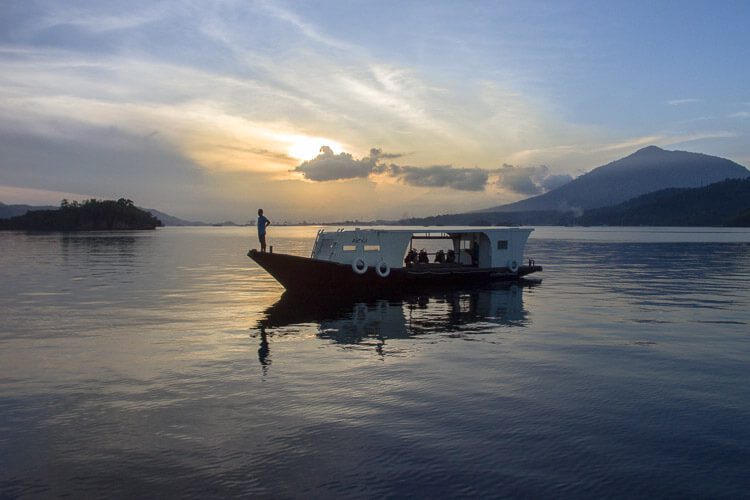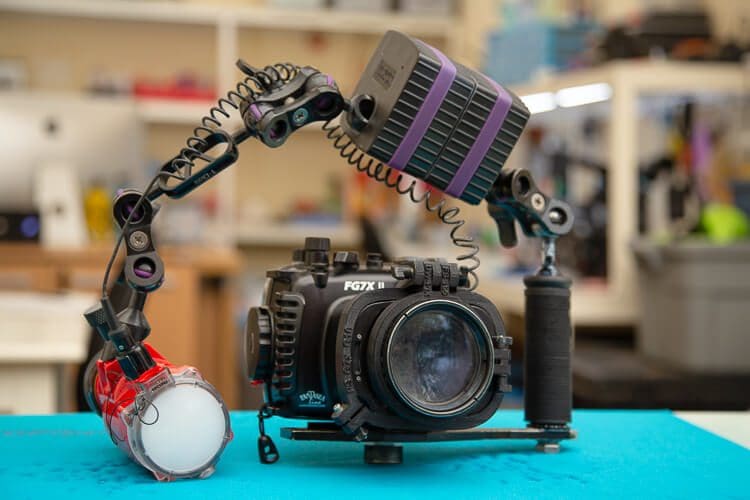
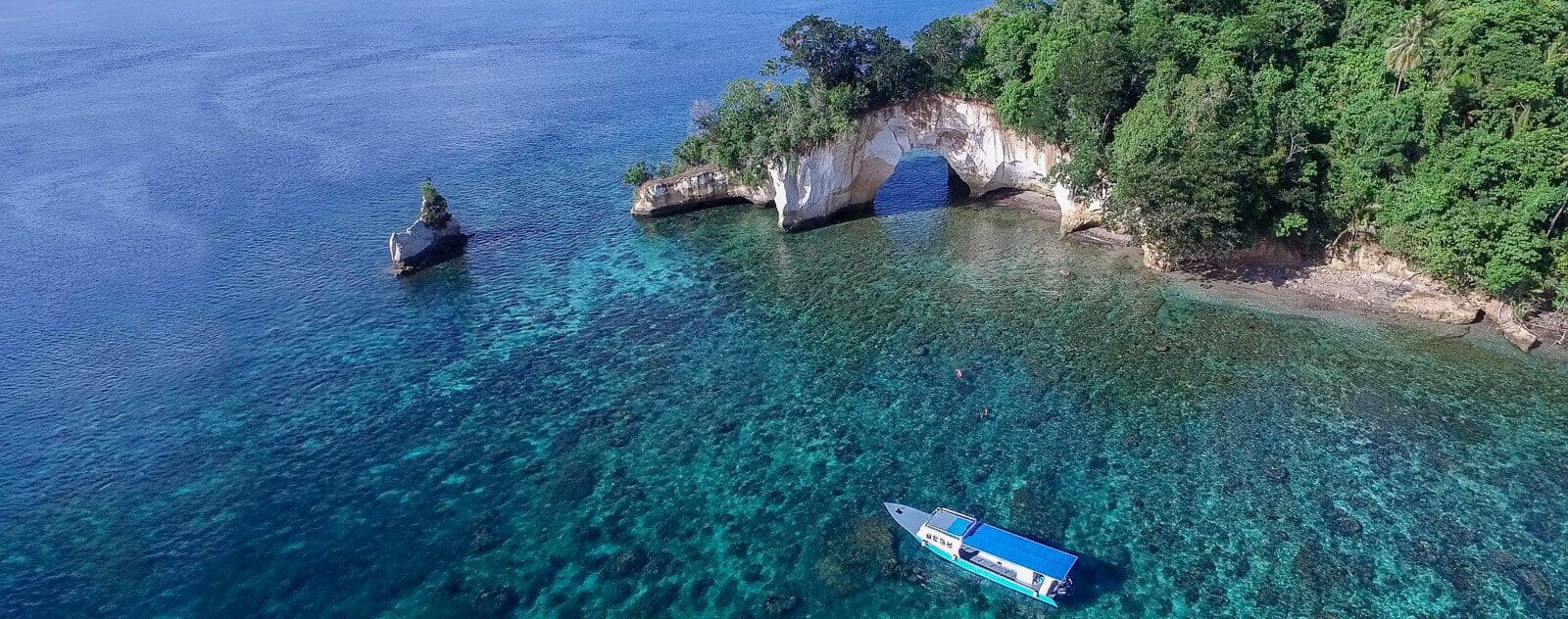

Introducing Muck Diving in Lembeh
Muck diving is at its best in Lembeh, where the sheer abundance of biodiversity and unique critters is greater than it is anywhere else on Earth. Every dive reveals countless special finds – often where you might least expect them. The excitement in muck diving lies in finding rare, camouflaged and breathtakingly beautiful (and often ugly) critters. For beginners, the marine life found by your guide is simply intriguing, unique and downright weird all at once. Experienced divers will feel the exhilaration of making “special finds” for themselves and a rush of adrenaline that can’t be matched. For underwater photographers, a great photograph speaks many millions of words.
Muck diving offers something for everyone and it develops an unparalleled attention to detail like no other style of diving can: With nothing to distract, the smallest of details begin to surface. That’s why when we muck dive we go at a slow pace and look to find the most camouflaged and often smallest of critters. Slow and relaxed diving also offers you the opportunity to observe and photograph the wondrous marine life that our expert-trained dive guides are so adept at finding.
Muck Diving Sites in Lembeh
The best muck diving sites are characterized by black, volcanic sand slopes which are littered with natural debris – which creates hotspots for hiding critters. We also have many combination dive sites within minutes of the resort that offer the best of muck diving together with beautiful, shallow-water coral reefs.
There are muck diving sites on both banks of the Lembeh Strait. They tend to follow a similar topography of a shallow sandy plateau close to the shore which gently gives way to a sandy slope at around 5-10 meters. In the middle of the straight (from north to south) the sites are black sand ‘true’ muck diving sites – and this is exactly where Lembeh Resort is located! As you near the north and south ends of the Strait, you will find the sand becomes lighter and corals are more prevalent.
The dive ‘site’ names in the Lembeh Strait actually refer to entry points, we dive in the direction of the current (usually very mild), and can cover 2-3 denoted sites/entry points during a dive. This is because the dive sites don’t come to an end, they simply merge into the next one. After descending we head out over the sandy flat to the slope and start slowly descending down, looking for critters as we do. Once we have reached our maximum depth (according to your certification level), we start to slowly make our way back up the slope in a slalom or zigzag pattern. This type of diving allows us to cover a lot of ground to maximize critter sightings and it’s known in North Sulawesi as ‘diving Lembeh-Style’.
We spend quite a lot of time between 18-22 meters (60-75 feet) so Nitrox is ideal and PADI Enriched Air Nitrox courses are available on-site.
Some of our favorite Lembeh Strait muck diving sites include Hairball 1, 2 and 3, ROJOS, Air Bajo and Makawide, and TK3. To find out more, take a look at our dive site map. Critter sightings at these sites vary – read more about this in the ‘Muck Diving Critters in Lembeh’ section below.
Other Dive Sites in Lembeh
Within minutes of Lembeh Resort there are a host of both black sand and grey or white sand sites. You’ll find that the critters across these sites differentiate and at Lembeh Resort we are one of the only operators to really distinguish between these diving locations.
The Lembeh Strait is located in the heart of the Coral Triangle in Indonesia so for those who’d like to explore or combine coral reefs into their trip we have some of the most pristine reefs on Earth. Take a look below at some of coral reef diving locations.
Muck Diving Critters in Lembeh
There are other regions in the world that have some of the same unusual critters as we have here in Lembeh, however, we also have many that can ONLY be found in the Lembeh Strait. What really makes Lembeh different from other muck diving regions is the vast number of species and sheer abundance of these critters. Lembeh also differs in that the critters are easier to spot on the black sand. Without coral reef to hideaway in, the critters in Lembeh rely on their camouflage to hide in plain sight. It is this sheer abundance and the ability to spot a catalog of critters in one dive that really makes Lembeh different. Spotting critters in Lembeh can be a bit like picking out candy in the candy store!
Critters in the Lembeh Strait are constantly on the move! Our dive sites are not known specifically for certain species, the critters are on the move and their prevalence varies from season to season. Our dive guides are trained in Marine Biology and they are constantly tracking critter movement so they know where to go to find the critters you want to see.
Many of the most impressive critters in Lembeh are crustaceans or cephalopods, of which there is an almost impossible-to-comprehend variety. Some of the stand out crustaceans include tiger shrimps, skeleton shrimps, harlequin shrimps, decorator crabs, pom-pom boxer crabs, candy crabs, and in Lembeh commensal shrimp species are wide-ranging – simply too many to list!
Cephalopods are often sought after by underwater photographers and in Lembeh we see a plethora of octopus species including coconut octopus, wunderpus, mimic octopus, blue ring octopus, algae octopus, hairy octopus, longarm octopus, starry night octopus, and mototi octopus (to name but a few!)
Unlike most regions that have one or perhaps two species of cuttlefish, in Lembeh we have some stunning examples including the iconic flamboyant cuttlefish, pygmy cuttlefish, golden and broadclub cutlefish.
Aside from crustaceans and cephalopods, the Lembeh Strait boasts an armory of nudibranch, 8 different species of frogfish, rhinopias, pygmy seahorses, the endemic Banggai Cardinalfish, Mandarinfish, and new species continue to be discovered!
Take a look at our Critter Log to see the weird, wonderful, and bizarre species that await you – there are simply too many to list here.

BLACK SAND SITES
Did you know that you’ll never find a blue ring or a mototi octopus on a black sand dive site? These rich, black volcanic sands are home to hairy frogfish, numerous species of nudibranch, crustaceans and a wealth of Lembeh’s most iconic critters. Lembeh Resort’s dive guides are marine biology trained to understand where to find each critter. Air Bajo, Hairball, TK and ROJOS are some of our favorite black sand sites which are packed with critters from start to safety stop.
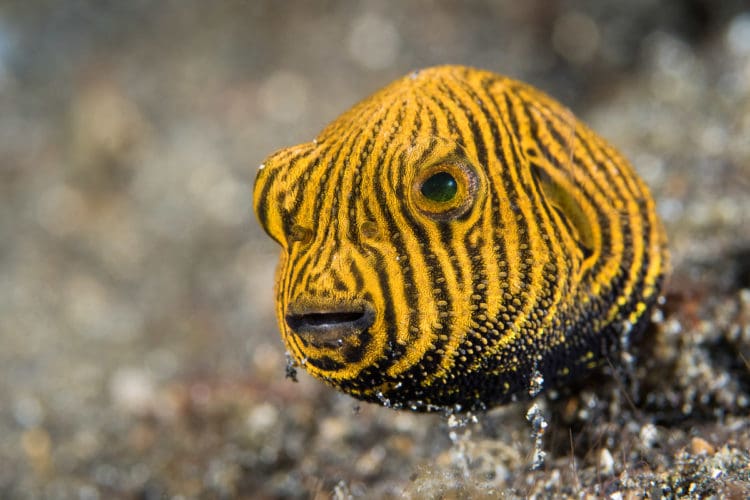
WHITE & GREY SAND SITES
Our grey and white sand dive sites offer different critters to those found on black sand sites. There are few operators in Lembeh that recognise this distinction. Our in-house marine biologist and marine biology trained dive guides know which sites give you the best opportunities for specific species. Explore the grey and white sands of Pintu Colada, Pantai Parigi, Nudifalls, Bianca and Serana to discover unique finds and some of Lembeh’s most iconic critters.
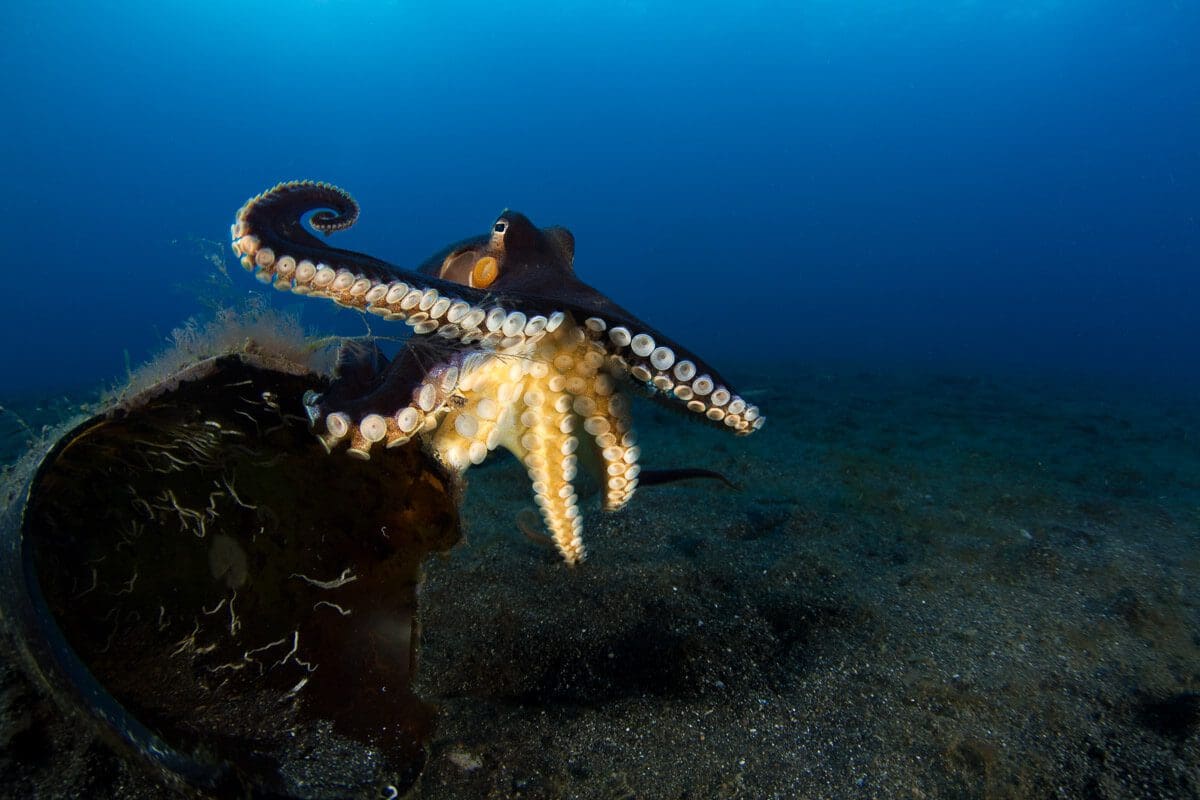
Coconut OctopusThis incredible animal uses sea shells, coconut shells, glass bottles and other hollow items as a portable home. The coconut octopus are amongst the most inquisitive inhabitants of Lembeh Strait. |
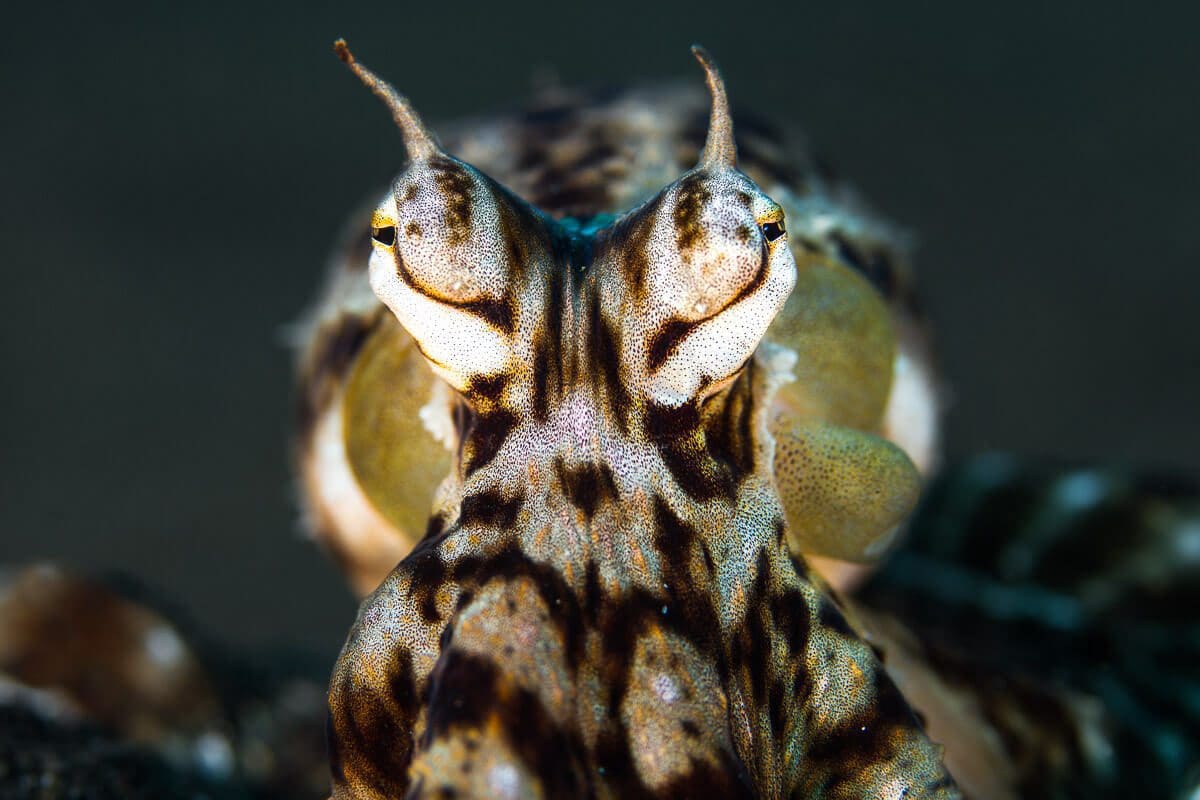
Mimic OctopusThe mimic octopus was discovered in the Lembeh Strait in 1998 and instantly surprised the scientific community with its unique behavioural traits. If threatened the mimic octopus can instantly change its behaviour, coloration and shape to mimic up to 16 other animals. |
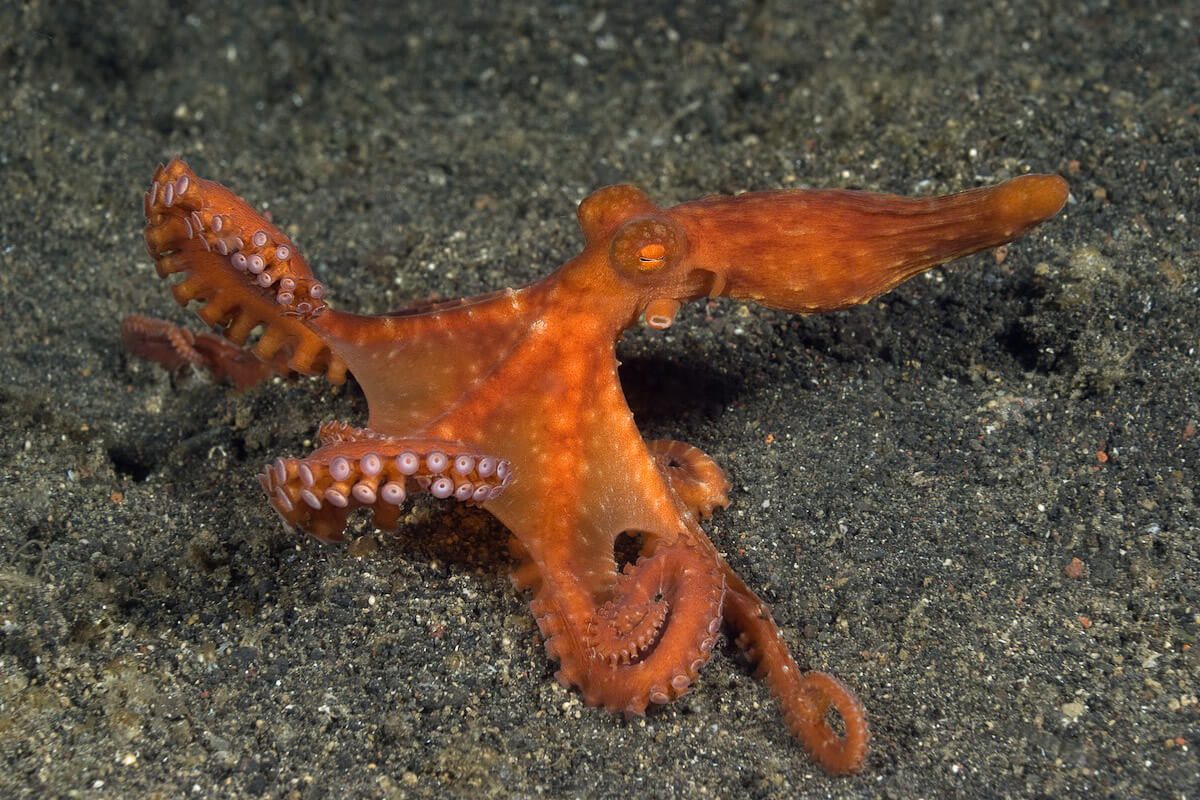
Starry Night OctopusThis elusive octopus lives on black sand sites and is only seen at night. Often found in shallow waters this rare species grows to an astonishing size of 80cm making it one of the largest types of octopus found in Lembeh Strait. |

Mototi OctopusThis beautiful species is closely related to the much more famous blue ringed octopus and scientists believe that it carries a venom which is equally as potent. The mototi is often found hiding in discarded glass bottles or in the abandoned tubes of polychaete worms. |
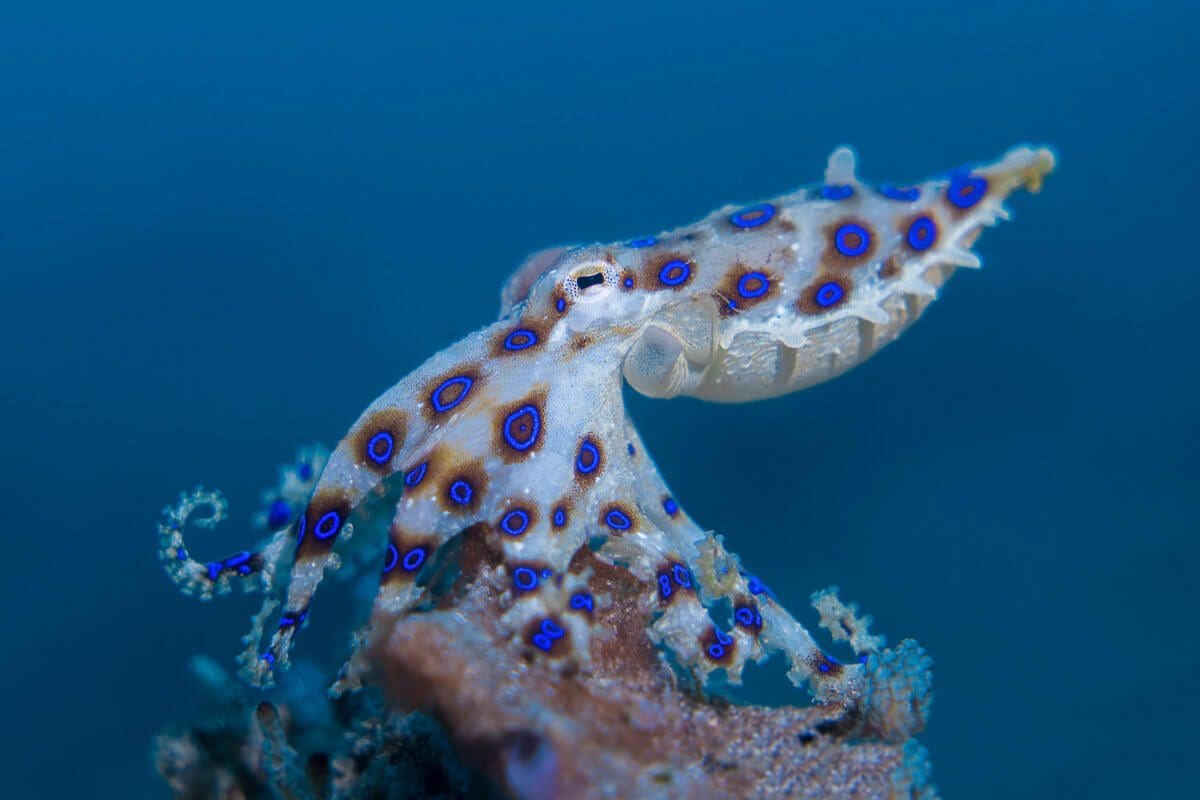
Blue Ringed OctopusA highlight of diving in Lembeh Strait, the blue ringed octopus is only the size of a golfball. Its saliva packs one of the most powerful venoms known to man. With a the venom released in just a single bite a blue ringed octopus can kill up to 26 adult humans within a few minutes. |

Wonderpus OctopusThis animal has the most suiting latin name: Wonderpus Photogenicus. The Wonderpus can show off electrifying color changes and is often found strutting around with its eight arms raised towards the surface. |
EXPLORE MORE
North Sulawesi offers a tremendous variety of exciting diving activities, read on below to learn more.
Join us for a 2 or 3 dive day trip to discover the rich and vibrant coral reefs which surround Bangka Island, the north of the Lembeh Strait and the east coast of Lembeh. These lesser known dive sites are teeming with life and bursting with kaleidoscopic colors.
For some of the unique marine creatures of the Lembeh Strait the action is just getting started when the sun goes down. Dusk or night diving in Lembeh is an absolute must for anyone who wants to see some of Lembeh’s strangest nocturnal critters.
Underwater photography is in our DNA. Our photography and marine biology trained dive guides, onsite Photo Pro, Camera Room and Camera Center are here to ensure you capture stunning underwater images and video footage which you can be proud of.



